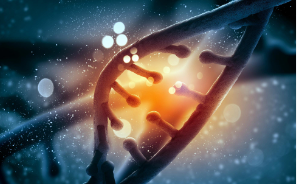New Research Reveals Spatial Grammar of Gene Expression
Sascha Duttke’s research is focused on understanding how different cells use the same genetic material in unique ways. This study could help discover new biological principles, especially related to how genes are turned on or off and the role of certain regulatory mechanisms.
The Human Genome
The human genome contains all the genetic instructions necessary for a human’s development and functioning. It’s like a blueprint for life, stored in DNA. The genome is about the size of 2 megabytes of data, and it contains all the information needed to control the activities of our cells.
What are Transcription Factors?
Transcription factors are special proteins that help read the information in our DNA. They attach to specific regions of the DNA and start a process called transcription, which copies genetic information from DNA to RNA. This process is crucial because the RNA then helps produce proteins—the building blocks and workers of our cells.
Duttke’s research showed that the position of these transcription factor binding sites—the spots where the transcription factors attach to DNA—can change how a gene is expressed. If the sites are arranged differently on the DNA, the gene might be activated or suppressed in different ways, leading to varied outcomes.
How the Study was Conducted
In this study, researchers grew cells in a lab and used advanced methods like RNA sequencing to study how transcription factors behave. They manipulated the presence of these factors to see how they affect the transcription process and the expression of genes.
The research found that binding sites for transcription factors can be located either before or after the starting point of gene transcription. This placement can change how the transcription factors behave—some, like NRF1 and YY1, can either activate or suppress gene activity, depending on where they attach.
Genetic Variations and Their Effect
The team also studied over 4 million genetic variants—small differences in DNA that exist naturally among people. They discovered that the location of these variations on the DNA influences how the transcription process occurs. This supports the idea that where a transcription factor binds matters as much as whether it binds at all.
The findings are important for understanding diseases. Since the position of these factors on DNA can affect how genes work, understanding this could help scientists find mutations linked to diseases. This can improve how we diagnose and treat genetic conditions.
‘Spatial Grammar’ Concept
The term ‘spatial grammar’ was introduced to describe the rules that govern how transcription factors and their binding sites interact. It’s a way of understanding how the layout of these sites on the DNA influences gene regulation.
Insights Into Evolution
This concept could also shed light on evolution. By understanding how gene regulation has evolved to meet environmental challenges, scientists can explore how complex organisms like humans have adapted over time.
Duttke’s research offers new insights into the role of spatial arrangement in gene expression and could lead to a better understanding of both normal development and diseases.
Month: Current Affairs - October, 2024
Category: Science & Technology Current Affairs








